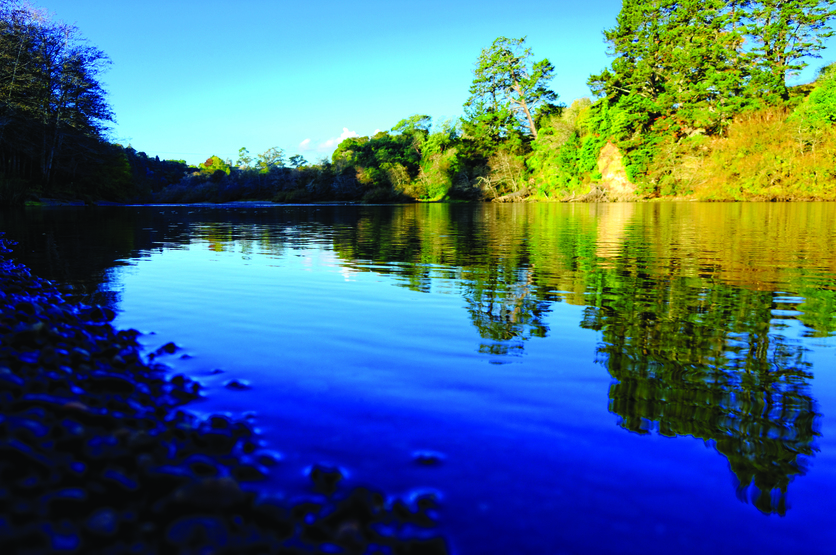This collection of resources started when Jonathan Kilgour from the Waikato-Tainui College for Research and Development approached the Science Learning Hub to develop an education resource concerning the Waikato River. Barb Ryan and the College worked together to develop resources about restoring the health and wellbeing of the Waikato River.
The resource was to combine iwi and science perspectives about the river and how communities might collaborate to restore the river. This included mātauranga about the river, restoration projects being conducted along the river and Waikato-Tainui values relating to the river.
Mātauranga concepts
These resources are mainly about restoring the Waikato River from a Waikato-Tainui perspective. Waikato-Tainui iwi, as tangata whenua (indigenous people) of the Waikato region, view the land and the river as ancestors that they have a responsibility to look after. The College developed articles about Waikato-Tainui associations with and values about the river. This article describes the significance of the river to Waikato-Tainui and how it has provided sustenance and protection for generations. Another article describes the arrival of European settlers and the use of the river as a trade route. It then describes how a chain of events was set in motion that saw iwi dispossessed of the river in 1863 and how the 1995 land settlement and the 2009 river settlement acknowledged the confiscations during the 1800s. Other articles explain concepts of kaitiakitanga and mana whakahaere and about some of the tikanga (customs), waiata and whakataukī (proverbs) relating to the river.
The College filmed iwi members who have a strong association with the river. These people told their own stories about growing up beside the river and how they continue to connect with their tūpuna (ancestors). Snippets of these stories were developed into an interactive map of the Waikato River. The map includes some significant places along the River for Waikato-Tainui.
The research
We met with several iwi scientists to discuss their restoration projects and research and then filmed them talking about their work along the river and with iwi.
- Erina Watene-Rawiri was involved in research on glass eels, growing eels for commerce and reducing the effects of koi carp. Research articles and video clips tell her stories.
- Norman Hill talks about his time in the laboratory at the Huntly Power Station and more recently as an environmental officer and liaison between Genesis Energy and iwi.
- Cheri van Schravendijk-Goodman was involved in research on whitebait and restoring river islands and wetlands – including the management of invasive pest plants. Cheri’s work also includes managing a scholarship research programme where iwi students are given an opportunity to be involved in the restoration work.
- Lorraine Dixon discusses her work developing a teaching tool that helps to identify needs, goals and aspirations for the river based on a mātauranga Māori view. Cultural indicators are then identified from this for the restoration of the river.
Supporting articles
Science ideas and concepts derived from the research material include articles on longfin eels, whitebait and koi carp – an introduced species. There are also articles about river ecosystems and human impact on river systems.
Specific articles on the Waikato River help to give some background – The Waikato River (early beginnings and geology), Waikato River ecology and biodiversity and Human impact on rivers.
Activites
Two of the student activities are based on the work done by Lorraine Dixon. They use her Ake Ake model – helping people explore changes that have taken place in the local environment over time and planning for the future. One activity (Ake Ake – forever and ever) explores Lorraine’s model and the local environment in Rāhui Pōkeka (Huntly) and then encourages students to explore positive changes for the river in their own area. The other activity (Mapping the future) encourages students to use the Ake Ake framework to think about changes within their local area over the years and to consider what aspirations they might have for the future for that area.
The Saving taonga activity helps students appreciate taonga such as tuna and whitebait and how these taonga have been affected by human impact. Students consider some possible solutions that might help to re-establish populations of these species.
River connections helps students make connections between the river environment and the species in and around it, learning about their relationships. The activity helps them visualise the interdependence within the river environment.
There is a teacher resource that presents four aspects of sustainability, concepts involved with each of the aspects and examples of the concepts within the context of restoration to the Waikato River.





